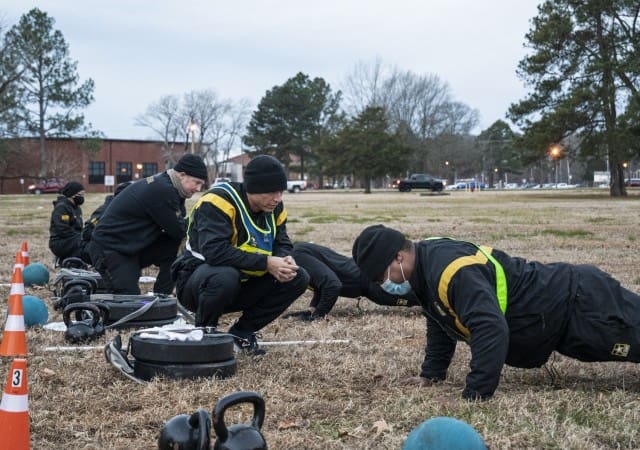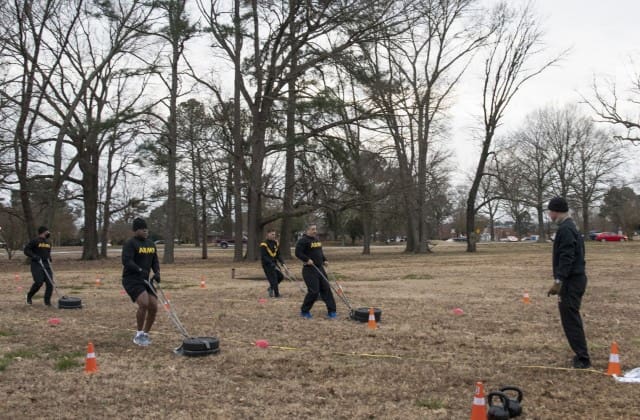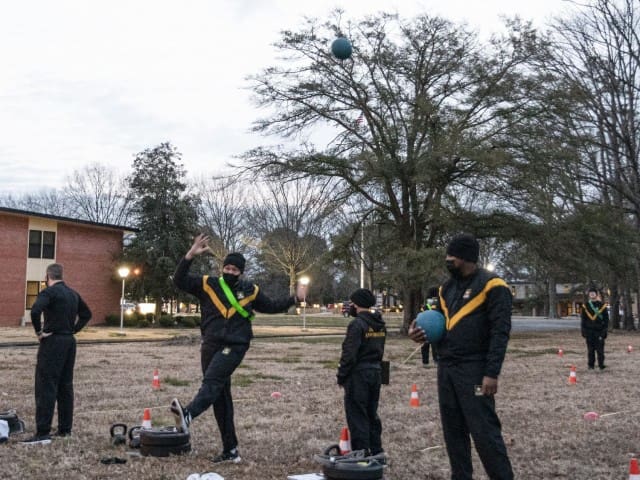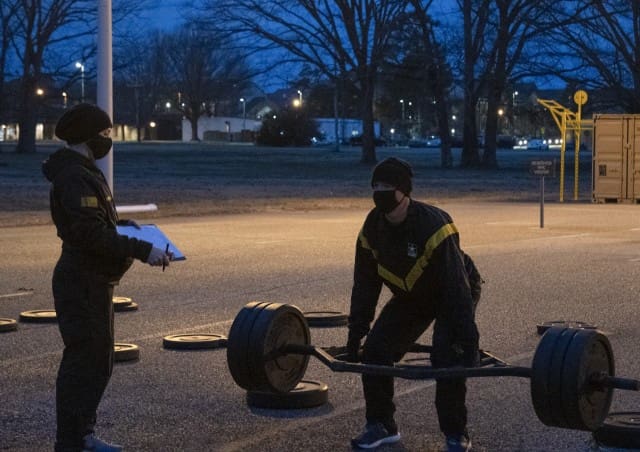JOINT BASE LANGLEY – EUSTIS, Va. – With the New Year comes a fresh start and a chance to start new positive habits, and that’s exactly what the U.S. Army is doing with the new Holistic Health and Fitness initiative.

The Holistic Health and Fitness system, led by the U.S. Army Training and Doctrine Command’s Center for Initial Military Training, represents a new approach to building lethality and readiness by focusing on Soldier physical, mental, and spiritual health.
From this new initiative came the new Army Combat Fitness Test, which will eventually replace the Army Physical Fitness Test as the official physical fitness test of record. Though the ACFT is still in the data collection stage, Soldiers across the enterprise have been encouraged to continue to train so they are ready to pass once the test is fully implemented.
A New Way to Train
In an effort to apply the new H2F initiative towards a variety of fitness demographics, as well as Soldiers’ ACFT performance, the team of expert at USACIMT have begun a ten week training program for Soldiers of Fort Eustis that puts the new initiative to work.

The program volunteers come from a wide range of fitness demographics, including Soldiers who are in the Army Body Composition Program, post-partum, post-surgery, or simply just struggling to pass specific events in the ACFT.
When asked about their goals for the program, Staff Sgt. Jacob Walker stated, “My goal is to recover from surgery with the new knowledge the Army is implementing with the H2F program, as well as to take this information back to my unit and train others with it.”
Sgt. Kenya King stated, “One of my strongest goals in this program is to take the knowledge I gain to encourage soldiers on a better health approach while training for the ACFT.”
The training group, coordinated by the 2020 Drill Sergeant of the Year, Sgt. 1st Class Erik Rostamo, meets three times a week and applies the five domains of Holistic Health and Fitness expressed in the FM 7-22 regulation – physical, nutritional, mental, spiritual, and sleep – to create individualized training plans for each of the participants.
Putting the Doctrine to Use
Along with the individualized fitness plans, Rostamo and his team will assist the participants in building a plan for their nutritional, mental, and spiritual health.

The participants will also work with command dietician, Maj. Brenda Bustillos, as a resource for guidance on creating nutritional meal plans that will work with each individual’s health needs. She will host regular discussions with the Army Body Composition Program participants after each physical training session to discuss and encourage healthy eating habits.
For mental resiliency, the program develops personal readiness through weekly Master Resiliency Training courses, creating Specific, Measurable, Attainable, Relevant, Time-based goals, also referred to as SMART goals, and providing various cognitive challenges during physical training. An example of a cognitive challenge that Rostamo provided was placing playing cards throughout the PT circuit without letting the participants know prior to, and then asking them which cards were placed after they finish the PT circuit. This type of training will strengthen the participants’ ability to stay aware of their surroundings while focused on a specific task at hand.
Lastly, for the spiritual component, the USACIMT chaplain, Lt. Col. Paul Fritts, provides the participants with lectures throughout the program to inspire them and help them find their “why” factor.
“The spiritual component is one of the most important, yet most misunderstood components of the H2F program,” Rostamo stated.
Rostamo explained that the spiritual component is composed of the Soldier’s values, or internal warrior factor, that drive them to want to improve themselves and be the best version of themselves that they can be.
Transforming the Force
This ten-week program, along with many other similar demonstrations happening throughout the force, shows just how beneficial the Army’s new H2F initiative can be when implemented correctly by team and squad leaders.

According to Rostamo, this new initiative is creating a cultural change in the Army that will escape the “one size fits all” approach to readiness.
“It will require a lot more creativity on the team and squad leaders than it has in the past to give Soldiers a plan that works for them,” Rostamo states. “Personal readiness is crucial, especially when it comes to building cohesive teams.”
By Nina Borgeson, TRADOC Communications Directorate


Nice masks dumb Army! Gotta love breathing in your exhaled CO2 while doing aerobic and anaerobic exercise. About as dumb as wearing a mask in your car, BY YOURSELF!
However graders are not wearing masks
It simulates running at high altitude and makes the body more efficient.
Perhaps you can share your numbers and values regarding the ACFT? Everyone’s a warrior on the internet apparently.
Meanwhile, the gender-neutral ACFT gets a gender-handicap facelift in ACFT 3.0. While soldiers of all genders and ages just have to pass the test using the same scoring scale, to determine OMLs, rank-order people during boards, and other favorable actions scores will be grouped into gender-based groups and then sorted into (paraphrased) top achiever, middle achiever, low achiever. Then female top achievers will be ranked at the same level as male top achievers and so on. In this manner, we once again get top achiever females with test scores that are lower than, say, a middle achieving male.
Where are you getting ACFT 3.0 from? http://www.army.mil/ACFT only has 2.0 listed.
I’m pretty certain Steve is being sarcastic as in the Army’s next step to un-gender the service since that’s the direction we’re heading in unfortunately.
“Lighten up Francis” Lol
Ed, what is your military background?